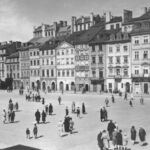Bard Music Festival
Program OneThe Genius of Chopin
August 11, 2017
Bard Music Festival
August 11, 2017


7:30 pm Preconcert Talk: Leon Botstein
8 pm Chamber and Orchestral Performances
Katarzyna Sądej, mezzo-soprano; Benjamin Hochman, Ke Ma, Erika Switzer, Hélène Tysman,and Orion Weiss, piano; The Orchestra Now, Leon Botstein, conductor
Fryderyk Chopin (1810–49), Variations on “Là ci darem la mano,” Op. 2 (1827); Piano Concerto in F Minor, Op. 21 (1829); Preludes, Op. 28 (1831–38); Polonaise-Fantaisie in A-flat Major, Op. 61 (1846)
songs and other works.
The first of two all-Chopin performances. Exploiting the festival’s unusual ability to vary the traditional concert format by integrating solo, vocal, and orchestral works within a single event, the program provides an overview of the composer’s all-too-brief career. Highlights include the beloved F-minor Piano Concerto, one of Chopin’s teenage masterpieces; rarely heard songs set to texts by the Polish poets he most favored; and his Variations on “Là ci darem la mano” from Don Giovanni, in the original version for piano and orchestra. It was this work that prompted the young Schumann to exclaim: “Hats off gentlemen, a genius!” and which – when Chopin played it to cap his Parisian debut – would serve as his passport to Europe.
Program subject to change.